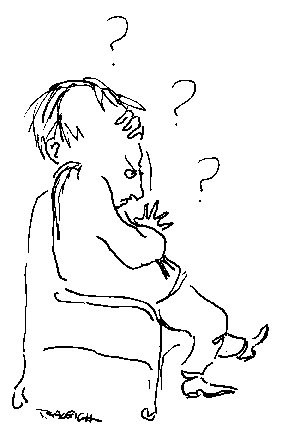 |
Things Remembered, Things Forgotten
By
HENRY P. RALEIGH
ART TIMES March 2008
HEREíS
ONE FOR the art historians: in Monet's "A Bar at the Folies Bergere",
on which side of the barmaid does the mirror reflection of the man
staring at her appear? I know the painting well enough. I visualize
the girl facing us, the mirror behind, an image — but which
side? I can only guess, hoping for the best of a fifty-fifty shot.
This
little memory conundrum is given in Clive Jamesí Cultural Amnesia,
sub-titled, Memories From History and the Arts (2007) and from
an essay on the poet Eugenio Montales. Mr. Jamesí point in this, as
well as in his other essays on notable figures in literature, poetry
and history, is to underscore the vagaries of memory — sometimes
accidental, sometimes willful, often through misunderstanding. Of
the latter he cites how our cultural recollection of the actress Marion
Davies, once a talented and successful comedienne in film, is now
largely drawn from her surrogate character in Orson Welles' "Citizen
Kane", where she is depicted as a colorless, inept singer.
The
oddities of filmic memory are more thoroughly explored by Stanley
Cavell in his 1979, The World Viewed. A film essayist, he admits
to errors made in his recall of films, convinced at the time of writing
that they were as he remembered them. In a symbolic analysis of the
hunting party scene in Renoirís ìRules of the Gameî, he gave particular
significance to the rifle carried by Schumacher, the gamekeeper. It
was a neat analysis marred only by the fact that Schumacher carried
no rifle. Thatís not so bad, though; I've seen this film ten or more
times over the years of teaching film history and the only specific
visual memory I can call up of the hunting scene is the death throes
of the rabbit.
Mr.
Cavell suggests that, at least for him, memory of films is overlaid
with memories of one's own life as a film goer, ignoring (forgetting)
those parts of a film for which no personal connections have been
made, or seem in mind somehow incomplete. Remembered parts may even
be altered to improve upon them to insure they will remain fixed in
memory. If Schumacher held no rifle, well, he should have. We all
know that Ingrid Bergman in "Casablanca" said "Play it, Sam", not
adding "again" as we like to remember it. But it does sound better
— rather sadly romantic that way.
Woody
Allen's "Manhattan" is another film I've seen frequently, yet on each
viewing I am startled to see that it's in black and white. I remember
with fair clarity most of the scenes and they come to mind only in
color. Why can I recall "Manhattan" only in color? I imagine, because,
I simply want it that way, the way it looks in other of Allen's Manhattan
films, Manhattan in its colorful best in "Everyone Says I love You".
I will confess, however, that it really never appeared that way while
I lived there.
When
he was much in fashion I had read, along with my students, the works
of Marshall McLuhan. In another of Allen's films there is a scene
in which Allen waits in a movie queue. Behind him a man pedantically
lectures a young woman on McLuhanís theories. Allen leads the fellow
off to one side where stands the real McLuhan who tells him he is
completely misinformed. And that is quite all, save for "the medium
is the message", that I can remember of McLuhan and his ideas. The
scene is caught in memory, yet I can't say for sure in which of Allen's
films it occurred — maybe "Crimes and Misdemeanors" but I wouldn't
bet on it.
My
memories of my childhood are in black and white as were the films
and newsreels of that period. Color doesn't enter my remembrances
until it became commonplace in film and later television. Dreaming,
on the other hand, remain stubbornly in black and white with but an
occasional splash of color. It does seem that as film goers, as maybe
in life, what is forgotten and what is remembered is a highly selective
process, never the same for everyone. Who hasnít experienced the viewing
of a film once seen in the past only to learn to their surprise how
much has been forgotten, passages wiped clean as if they had gone
out to lunch at that particular segment? There is, perhaps, some advantage
to this for those with sizable collections of old film cassettes,
for they can be re-run as first-time viewing. You may have to wait
a bit longer for you and your DVD's to age.
Clive
James' essay on Eugenio Montales includes one of Montales' aphorisms
(Mr., James has a special fondness for insightful aphorisms):
"True culture is what remains in
a man when he has forgotten
everything he has learned."
Not
having learned as much as Mr. James or Mr. Montales, I figure Iíve
got a head start at possessing true culture.
